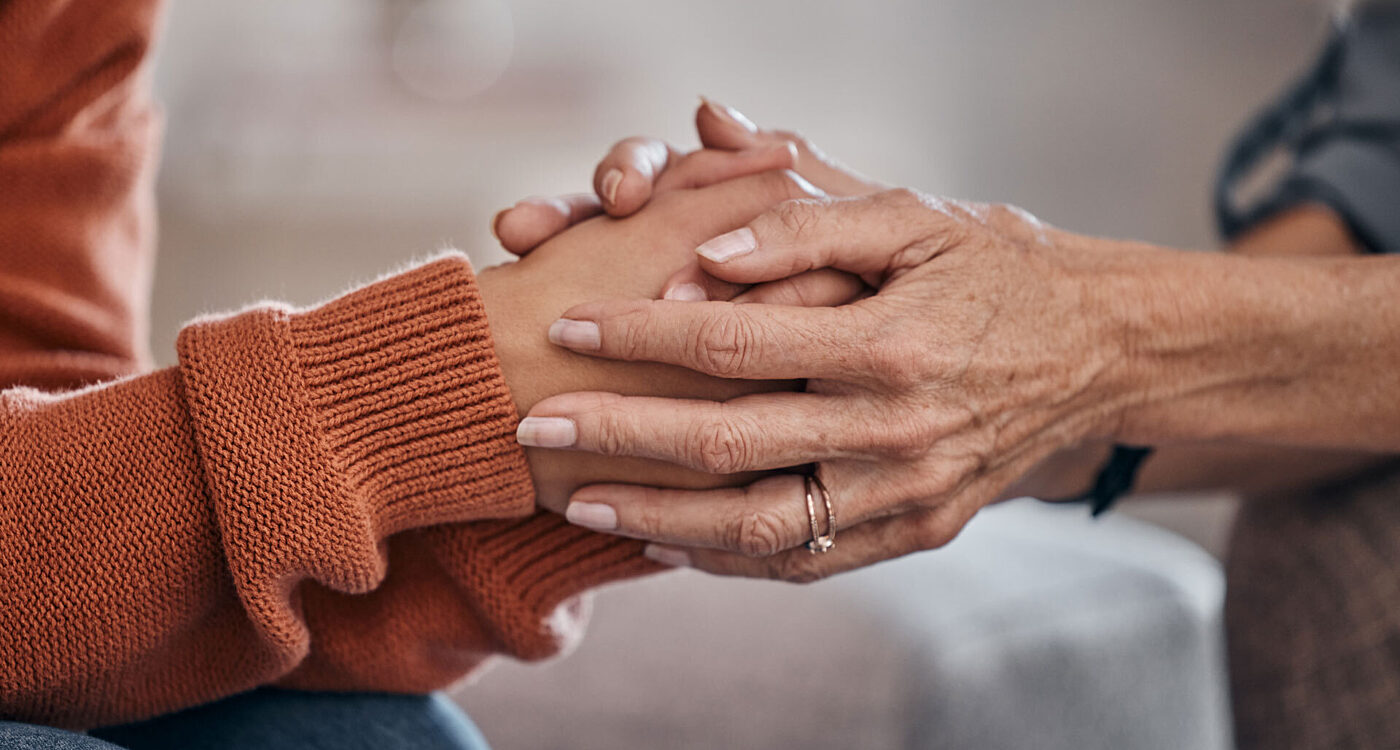By Wendy Lipshutz, LCSW, Program Director of Shalom Bayit
October is National Domestic Violence Awareness Month. While we work every day towards ending domestic abuse, this month we highlight the pervasive issue of domestic violence.
For 32 years, the nonsectarian Shalom Bayit (Peace in the Home) program has provided immediate and longer-term counseling for survivors of abuse. Through helping survivors find safety and understanding that they are not to blame, we help them rediscover their voices and begin to heal. We also continue to educate our community about the various types of abuse.
Common Types of Abuse
Domestic violence is defined as a pattern of abusive behaviors used by one partner to control another in an intimate relationship, and it can take many forms: physical, verbal, sexual, emotional or psychological, spiritual, social, financial, legal, or technological. Abuse is more prevalent than many realize because, while it is always about power and control, it is not always visible.
Physical Abuse
Physical abuse includes physical violence and threats of harm to a person, their loved ones, and/or their pets. It includes any form of physical harm: hitting, kicking, choking, spitting, pinching, pushing, shoving, or slapping. Whether it leaves marks or not, it is abuse. No one deserves to be hurt, and safety must always come first.
Sexual Abuse
Sexual abuse includes any sexual act forced upon another person without consent, and includes degrading treatment of one’s body. It is never the victim’s fault and can happen within marriages and long-term relationships as well as dating situations.
Emotional or Psychological Abuse
Emotional abuse is often less visible but can leave the deepest wounds. It might appear as jealousy, manipulation, or control, disguised as love: “I just need to know where you are all the time.” It can involve:
- Isolation: keeping someone away from friends or family, controlling their transportation or communication, or monitoring their spending
- Intimidation: constant criticism, humiliation, or making a person feel incompetent or worthless
- Gaslighting: denying or twisting reality to make a survivor question their perceptions or sanity
The effects of emotional abuse can include self-doubt, anxiety, depression, and difficulty maintaining relationships or employment.
Financial and Technological Abuse
Abusers often use money and technology as tools of control. They may restrict access to bank accounts, sabotage employment, or track a partner’s phone and online activity. These tactics reinforce dependency and fear.
Why Abuse Persists
I’ve worked with survivors for 42 years, and I still find the prevalence of abuse staggering. Though the veil of silence has been lifted, so much remains hidden or normalized.
According to the National Domestic Violence Hotline, one in four women and one in seven men in the U.S. have experienced severe physical violence by an intimate partner. Nearly half of all adults report psychological aggression from a partner at some point in their lives, and between 30% and 60% of abusers also harm children in the household. In Georgia alone, more than 42,000 incidents of family violence were reported in 2024—a 12% increase from the previous year. Seventy percent of victims were women, and a third of incidents occurred with a child present. These statistics are sobering.
Despite greater societal awareness, survivors still face barriers to safety, both from their abusers and from the systems meant to protect them. Courts can be manipulated by controlling partners, and cultural norms sometimes pressure survivors to stay silent or to forgive prematurely.
For many, abuse feels “normal” because they grew up surrounded by it in their families; intergenerational trauma can make it difficult to imagine a healthy relationship. Over the years, I’ve worked with many who came from homes that looked “perfect” from the outside but were full of fear behind closed doors. Others were so controlled that they had no access to support. Healing requires not only personal safety but also new models of love, respect, and equality.
How You Can Help
Abuse thrives in silence and isolation, and each of us has a role to play in breaking that cycle. Advocate for fair laws and systems that protect survivors. Volunteer with organizations that provide safety and healing. Speak up when you see controlling or demeaning behavior being normalized. After decades of working with survivors, I know that healing is possible. When we listen, believe and act together, we help build the world we all deserve: one rooted in safety, dignity, and hope.
If You Know Someone Who Is Being Abused
Your response matters, and the way you listen, believe, and support can make a real difference. Listen without judgment and believe their story, letting them know they are not to blame. Never minimize or excuse the abuse, and offer resources and information that can help. Support their choices, even if you wish they would leave sooner, because survivors need control over their own decisions to rebuild safety and confidence. Recognize their courage and resilience, and respond with respect, dignity, and compassion. By connecting people to help in this way, you can truly change lives.
If You Think You Might Be Experiencing Abuse
Learn the warning signs and trust your instincts: if you feel afraid, belittled, or controlled, reach out for help. Abuse is never your fault, and yours and your children’s safety is the top priority.
JF&CS Shalom Bayit: 770.677.9322 | Shalom Bayit
National Domestic Violence Hotline: 800.799.SAFE | thehotline.org
National Teen Dating Abuse Helpline: 866-331-9474 | loveisrespect.org
Thank you to Wendy and our Shalom Bayit clinicians who work tirelessly to help people heal from domestic violence. If you or someone you know needs services, click here, and to support the work of JF&CS, click here.
